Stephanie Bursese: Changing the Tense
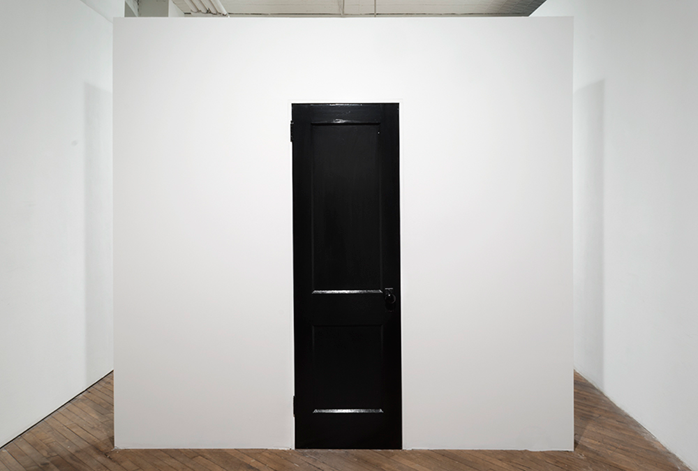
(IMAGE: Installation view of Changing the Tense. CREDIT: Courtesy of the artist)
CHRISTOPHER GIANUNZIO: How does photography fulfill your creative process? How did you arrive at the image as a primary delivery system for your ideas?
STEPHANIE BURSESE: I’m attracted to concepts that can explode and contract. The psychology at work both in the artist’s mind and in the mind of the person looking at the work is something that I keep afloat. A primary interest of mine is incubating a state of confusion or questioning for the person standing in front of the work. My work often comes from personal experiences where I lack control; I use the work to seek control and it does that by taking hold of an image in the world and setting it aside. I bring those images together in a certain combination and develop a psychological space; each image constructs a phrase in the language inside that space. Then the presentation of those images increases the specificity; maybe that’s the dialect of the language. The content of those images-the height, the size, the material of the frames, how closely they are hung-all of these work towards creating an experience that departs from the image. I see the exhibition space as a whole space, to be considered in its physical entirety. This physical experience should track back and reinforce the psychological concepts.
Photography is so perfect at not landing. It’s concrete, it’s a material, but it also activates our associative reasoning. It preys on our assuredness and keeps us from being definitive because we still think it comes from the world.
CG: Your installation, Changing the Tense at Vox Populi has some very deliberate architectural elements; can you describe how you think about your work in the context of exhibitions?
SB: The impetus for building the wall inside the gallery developed directly from the concepts within the photographs. I started to develop strategies about how I wanted the images to function, as if when you tried to enter them, there was a hand on your chest, pushing back half the time. That’s how I think about the image plane, as a barrier that must be crossed, both mentally and visually. It connects to flatness and depth, volume, distance, and how tightly the composition is populated-these things all effect our ability to enter image space and feel like we understand our relation to the objects and spaces in the photograph.
I wanted the photographs to resist that access. To multiply and harness that idea, I built a real barrier in the space that must be confronted to see the photographs. There is a door, a familiar entryway, but you can’t open it-so you have to go around either side. As you choose, left or right, you unknowingly design the way in which you see the work on the other side of the wall. There is also a concept of doubling or twin-ning inside the exhibition: a split entryway, two images on the back wall and two sets of 4 images on opposing walls, and the double-sided wall. This concept cycles back to another main interest, namely doubting or questioning what you are experiencing. In the book, this is illuminated by printing two formally similar images close together, one on the front of a page and one on the back. The action of turning the page back and forth to compare the images but not being able to see the images at the same time relates to standing in the middle of the opposing walls of the gallery.
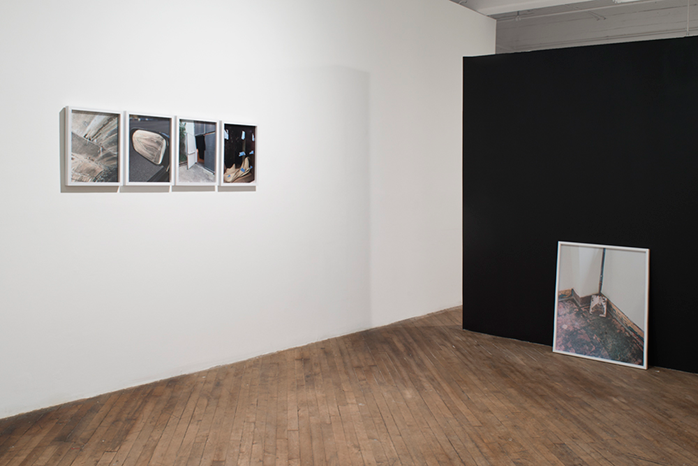
(IMAGE: Installation view of Changing the Tense. CREDIT: Courtesy of the artist)
CG: The exhibition also marks the publication of your second book. How do you see the book differently as opposed to an exhibition? What can be done on pages that cannot be achieved on the walls?
SB: The air in the room of a show and the air in the room of a book are made up of very different particles. In the book, I can control just about everything-the sequence, the rhythm, which images you see together, even the weight of the work. I can hand it over as a well-constructed gesture. The show is much more wild and must account for all of the possible ways people will not go in the direction you suggest.
The book form is paramount in my process. That is where the whole series lives and dies, it is finite. Because I am designing the book as well as creating the work, I use the book design very deliberately to expand on conceptual ideas present in the photographs.
Books give us these limits that don’t exist in the world. You can walk out of a room, down the stairs and out into the street, there are endless choices in physical space. With a book, you really have two choices, put the book down, or be immersed fully in the world the book creates.
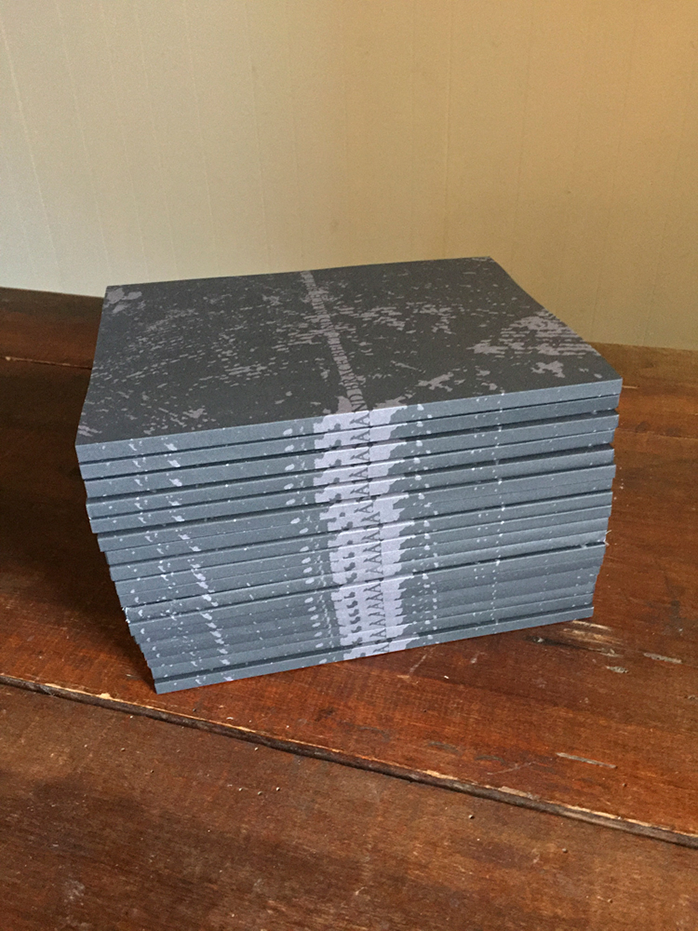
(IMAGE: Belt and Brace, Bursese’s second book, published November 2015 CREDIT: Courtesy of the artist)
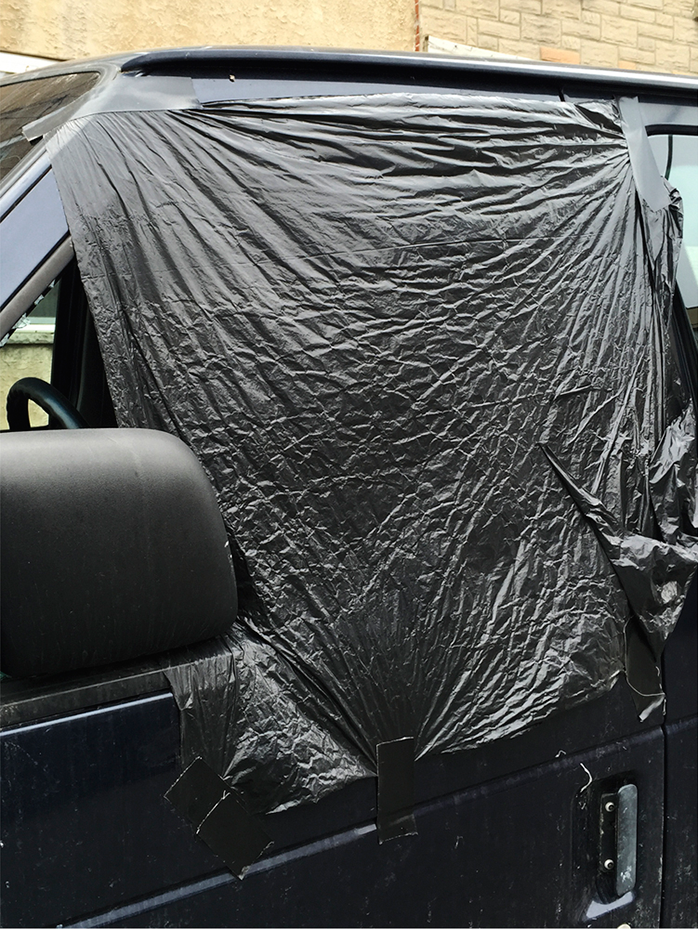
(IMAGE: Black Window (Bag), 2015. CREDIT: Courtesy of the artist)
CG: It can be said that any creative act is one of world building where a visual language is being created with a kind of emotional architecture. What do you want your world to say?
SB: We should remain aware of how we interpret the world and question the signals we receive. Our experiences are highly managed by all those that proceeded.
This is a foundation level concept and it exists beyond art and spills over into just being a person. When we look, we should try to look with our present self and crystallize the moment in front of us in real time and space. What happens inside our mind and in our emotional core during that moment are important to register, but also important to classify separately. That is where the work actually exists for me-in the moment we realize that something is happening.
CG:How much of this show is biographical? What does that term even mean in photography now?
SB: All of the show is biographical and everything I ever have made and will make is biographical. I think every considered piece of art that has been made by an artist is biographical. It means the same within photography as it means within all other art forms, the art is about the artist who makes the work.
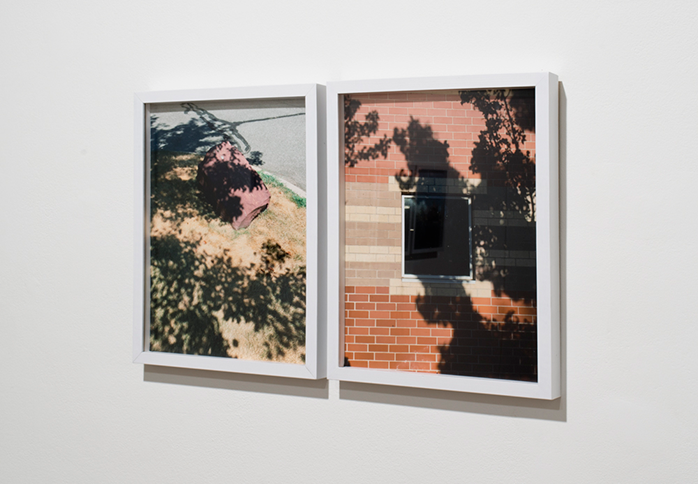
(IMAGE: Installation view of Changing the Tense. CREDIT: Courtesy of the artist)
CG:Your process and style of working requires you to be out in the world in search of images. In some ways this approach is much different than so many photographers that choose now to use the interior of their studio as the world from which to build. What draws your to continue to explore in this way?
SB: If the photographs highlight my own experience, than I have to actually have an experience. That requires interacting with the world at large-walking, jumping, blinking. The public world doesn’t conform to your expectations, which is exciting to me. In the work, I attempt to pull people into my head and show them a scene that may be familiar to them-it now has some specific energy on it-when they go back out into their world, they are sensitized. It only works if they can connect their actual life experience with something I’m presenting, and then they have some trust in it. Otherwise it’s a fantasy world, not the real one we live in.
This is how I see the studio operating, very insular and sterile-entirely fabricated. Encountering the unexpected doesn’t happen in the same way in a controlled space like the studio.
CG: What are some of your upcoming projects? What are you working on now?
SB: I’m working on designing a system where the installation of the work, the prints in the exhibition and the images in the book fold into each other. In Belt and Brace, the first and last images in the book are from a previous exhibition, which look like the same image at a glance. The images themselves conjure up the idea of looping, going in and coming out, and second guessing your perspective, which was incorporated into the previous exhibition installation and mimicked in the book design.
I created photographs of the physical deconstruction of the wall in Changing the Tense and I’m just starting to work with those images now. Those images really start unravel the remaining seeds of reality in the work; I plan to keep watering them.
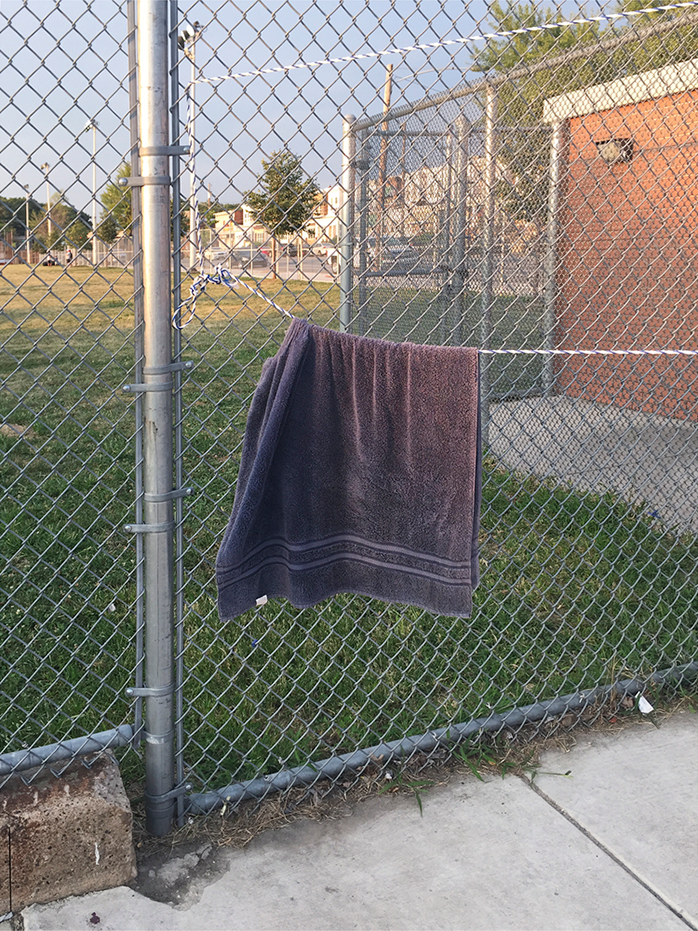
(IMAGE: Towel, 2015. CREDIT: Courtesy of the artist)
Christopher Gianunzio is an artist and curator based in Philadelphia and is currently the Director of the Art Gallery and the Sarnoff Collection at the College of New Jersey. He has organized exhibitions including the work of Adam Broomberg & Oliver Chanarin, Alyse Emdur, La Toya Ruby Frazier, Luis Gispert, Beate Gütschow, Greg Halpern, Ron Jude, Christian Patterson, Taryn Simon, Chad States, Mark Steinmetz and Ofer Wolberger. Previously he worked as the Assistant Director of the Philadelphia Photo Arts Center where he founded the Philadelphia Art Book Fair. He is currently a member of Vox Populi.
…
Stephanie Bursese: Changing the Tense
stephaniebursese.com/
ON VIEW: November 6-29, 2015
Vox Populi
319 North 11th Street, 3rd Floor
Philadelphia, PA 19107
voxpopuligallery.org
